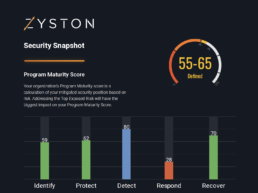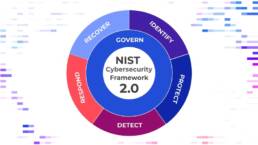Top 10 Trends in Cybersecurity for 2024
As we embark further into 2024, the ever-evolving landscape of cybersecurity presents new and emerging threats. In this era of rapid technological advancement, the need for a resilient cybersecurity strategy is more critical than ever.
The Escalating Stakes: A Look Back at 2023
Before delving into the future, let’s reflect on the recent past. The FBI’s Internet Crime Report for 2022/23 revealed an alarming surge in cybercrime, with an unprecedented 1.2 million reported incidents, resulting in an estimated $10.5 billion in losses. These staggering figures underscore the magnitude of the challenge and emphasize the urgent need for proactive cybersecurity measures.
McKinsey and Company’s projections for 2023 continue to reverberate, with 92% of surveyed companies experiencing a cyber attack. A 15% annual increase in cybercrime-related costs predicted through 2025 puts organizations under mounting pressure to fortify their digital defenses.
The Financial Imperative: Budgets Reflecting the Reality
In response to the escalating threat landscape, organizations globally are recalibrating their cybersecurity budgets. Global spending on cybersecurity solutions and services is expected to surge by 14.5% in 2024, reaching a staggering $198.5 billion. This robust financial commitment is not merely a reaction to past incidents but a strategic move to stay ahead of the evolving threat landscape.
On average, companies are earmarking 13.5% of their IT budgets for cybersecurity in 2024, a notable increase from the previous year. Moreover, a Gartner survey indicates that 78% of organizations plan to increase their cybersecurity budgets in 2024, highlighting a collective recognition of the growing importance of cybersecurity in the digital age.
1. Cyber Skills Gap
Throughout 2024, the shortage of skilled cybersecurity professionals remains a pressing issue. A notable statistic reveals that 62% of cybersecurity professionals perceive a worsening impact of the skills shortage on their organizations over the past two years. Recruiting and retaining talent with expertise in cutting-edge technologies, threat intelligence, and incident response pose significant challenges, exposing enterprises to the risks of cyber attacks, data breaches, and potential disruptions.
2. AI adopted on Both Sides of the Battle
As artificial intelligence (AI) advances at an alarming pace, the landscape of cybersecurity witnesses a surge in sophisticated and intelligent AI-powered attacks. In 2024, this trend is underscored by a statistic revealing a 25% increase in the sophistication of AI-driven cyber attacks compared to the previous year. The dual nature of AI becomes pivotal, presenting both a formidable challenge and empowering defenders to detect, evade, or neutralize threats.
3. Next-Level Phishing Attacks
Phishing attacks involving tricking users into giving attackers access to systems continue to be prevalent. Generative AI tools enable more attackers to make smarter, more personalized approaches, with a projected increase in deepfake attacks. Addressing this growing threat requires organization-wide awareness and education initiatives to equip employees with the knowledge to recognize and resist increasingly sophisticated tactics.
4. Cybersecurity in the Board Room
In 2024, cybersecurity must be a strategic priority no longer siloed within the IT department. Gartner predicts that by 2026, 70% of boards will include at least one member with expertise in the field. This strategic integration enables organizations to move beyond reactive defense and leverage their cybersecurity posture as a competitive advantage. The shift fosters a culture of preparedness, shaping the organization’s cybersecurity posture to align with broader business objectives.
5. IoT Cyber Attacks
The surge in interconnected devices contributes to a projected 35% increase in IoT-related cyber attacks. With the work-from-home revolution continuing, the risks posed by workers connecting over improperly secured devices persist. These devices, designed for ease of use and convenience, may be at risk due to weak security protocols and passwords.
6. Supply Chain and Critical Infrastructure
The supply chain remains a vulnerable link, posing challenges for organizations with a 30% increase in incidents involving third-party suppliers over the last year. To address this, businesses must enforce stricter evaluations of third-party suppliers, strengthening security protocols and preventing cybercriminals from exploiting downstream vulnerabilities.
7. Less Than Zero Trust
The fundamental concept of zero trust evolves in 2024 as systems become more complex and security integrates into business strategy. Zero trust expands beyond the corporate network to encompass the ecosystem involving remote workers, affiliated organizations, and IoT devices. The concept transcends its origins as a technical network security model, evolving into a dynamic and comprehensive approach.
8. Global Insights
In the U.S. in 2024, featuring major elections, cyberthreats become a focal point, leading to heightened cybersecurity measures. The country responds to the global exposure of state-sponsored cyber warfare tactics. It’s evident that wherever military operations take place globally, they will go hand-in-hand with cyber warfare operations.
9. Cybersecurity Regulations
Governments and organizations in the U.S. join the global movement of heightened awareness regarding cybersecurity risks. Large-scale data breaches and potential social and political fallout drive the emergence of new regulations. Worldwide stringent laws are being enacted to address the increasing frequency and sophistication of cyber attacks, shaping the way businesses approach cybersecurity as a strategic imperative.
10. Ransomware
In 2024, ransomware continues to loom large as a pervasive and evolving cybersecurity threat. The average ransom amount has skyrocketed by 60%, reaching an alarming $2.5 million per incident. Organizations grapple with the dual challenge of heightened attack sophistication and the escalating financial impact of ransomware, emphasizing the need for robust defense strategies.
Final Thoughts: Zyston’s Comprehensive Approach
In the face of these evolving cybersecurity trends, Zyston offers a fully managed end-to-end cybersecurity solution. With critical insights, innovative technology, and process expertise, Zyston enables businesses to build, operate, and mature effective information security programs. The newest technology, CyberCAST, enhances managed security services by providing critical insights into an organization’s threat susceptibility, informing a dynamic cybersecurity strategy that matures over time. Whether used a-la-carte or added to existing cybersecurity services, Zyston stands as a strategic ally in navigating the complexities of the cybersecurity landscape in 2024.

CyberCast Security Reporting
Security reporting that speaks business
Zyston CyberCAST brings the world of cybersecurity metrics up out of the weeds and into the hands of executive decision makers so nothing gets lost in translation. With CyberCAST, your organization gets clear visibility on security risks and also how your organization scores against your industry peers.




















